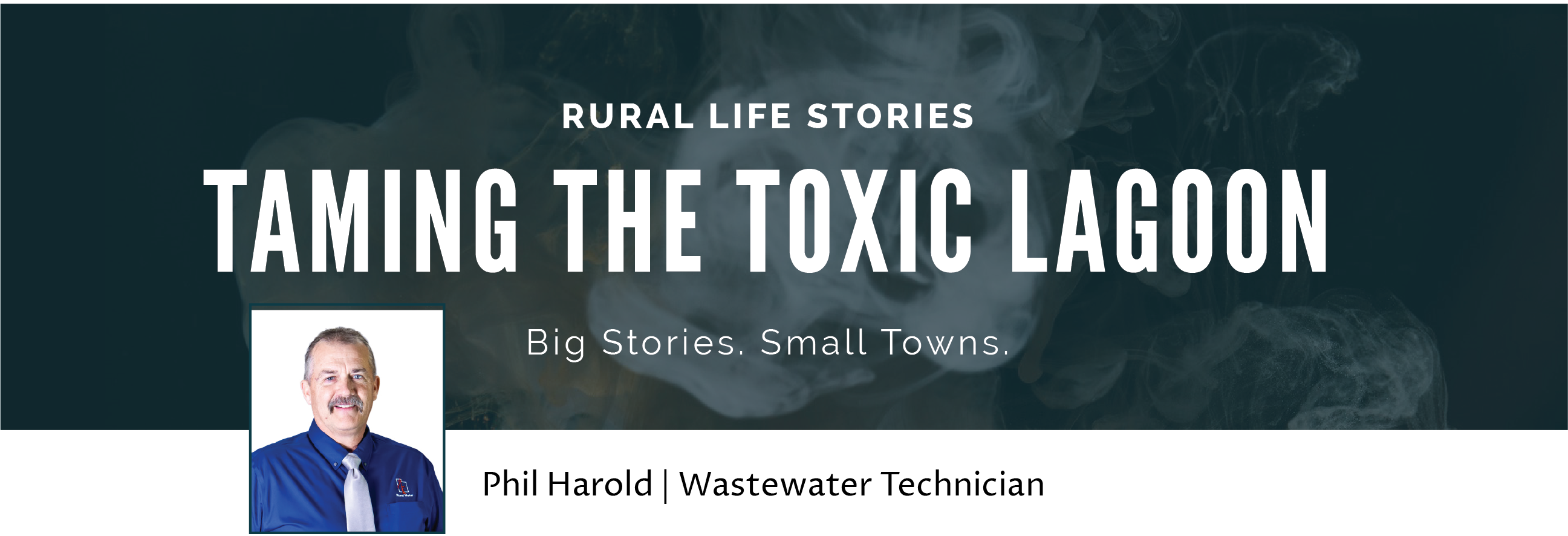TAMING THE TOXIC LAGOON

As a Wastewater Technician for the Rural Water Association of Utah (RWAU), Phil Harold has the unique opportunity to work in the field with operators across the state. Through his travels, he meets with systems and shares insight and offers technical assistance, with the hope of constructively & cost-effectively helping the systems/cities. On July 16, 2019, City reached out to Phil to discuss a potential problem that they were experiencing with their Wastewater (WW) lagoon. Upon arrival, Phil noticed an abnormally foul odor was coming from the lagoon and that the water itself was turning a milky gray color. It became very apparent that the primary cell was struggling, perhaps due to the overflow of irrigation water they received this year. An overflow which was quickly sealed off upon discovery.
Phil along with Salina City WW Operator, Mike Stevens, evaluated the conditions more extensively and decided to monitor the cell for a few days. Initial inspections noted the lagoon did not have any white streaks or indicators at that point to justify immediate action. White streaks would indicate the biology (good bacteria) was dying off.
On Monday the 21st Mike called Phil early in the morning stating that the conditions at the lagoon were worse. It was evident that Salina Cities WW system had received a toxic load that was killing off the biology in cell 1. A toxic load is a hit on a system which involves foreign contaminants damaging the biology of the lagoon, causing it to die. Paying close attention to the details in a lagoon, like the operators in Salina, is vital to prevent costly repairs. When warning signs of a toxic load are spotted in a lagoon, such as change in odor and water color, there are a few cost-effective options to deal with the problem. Phil recommended Mike add potassium permanganate (an inorganic chemical compound) to aid in adding oxygen to the dying microbiology and order probiotics as well. The probiotics enhance the biology, allowing them to perform better; It also aids in the removal of organic sludge which is cost-effective for systems.
These two options have an excellent track record of salvaging biology that remain and enhancing the conditions for them to ultimately recover. After adding potassium permanganate and probiotics, the system is placed on a regular scheduled dosage. This scheduled dosage intends to salvage as much biology as possible and make the lagoon fully functional. Salina is on the road to recovery after the recommendations were implemented. Recovery that, with some time, will bring the lagoon back to its healthy functioning self.
There seems to be a trend of toxic hits to WW systems in Utah, which is a serious issue that needs to be addressed. Wastewater systems that utilize lagoons can benefit from a public relations program that educates their citizens and industrial users on materials that, when flushed, can harm or damage lagoons treatment potential. Interaction with local law enforcement is also important so that they realize and inform the WW operators if a drug-related by-product may be entering the collection system. Assistance in the design and implementation of a public relations program can be provided by RWAU to its members.
